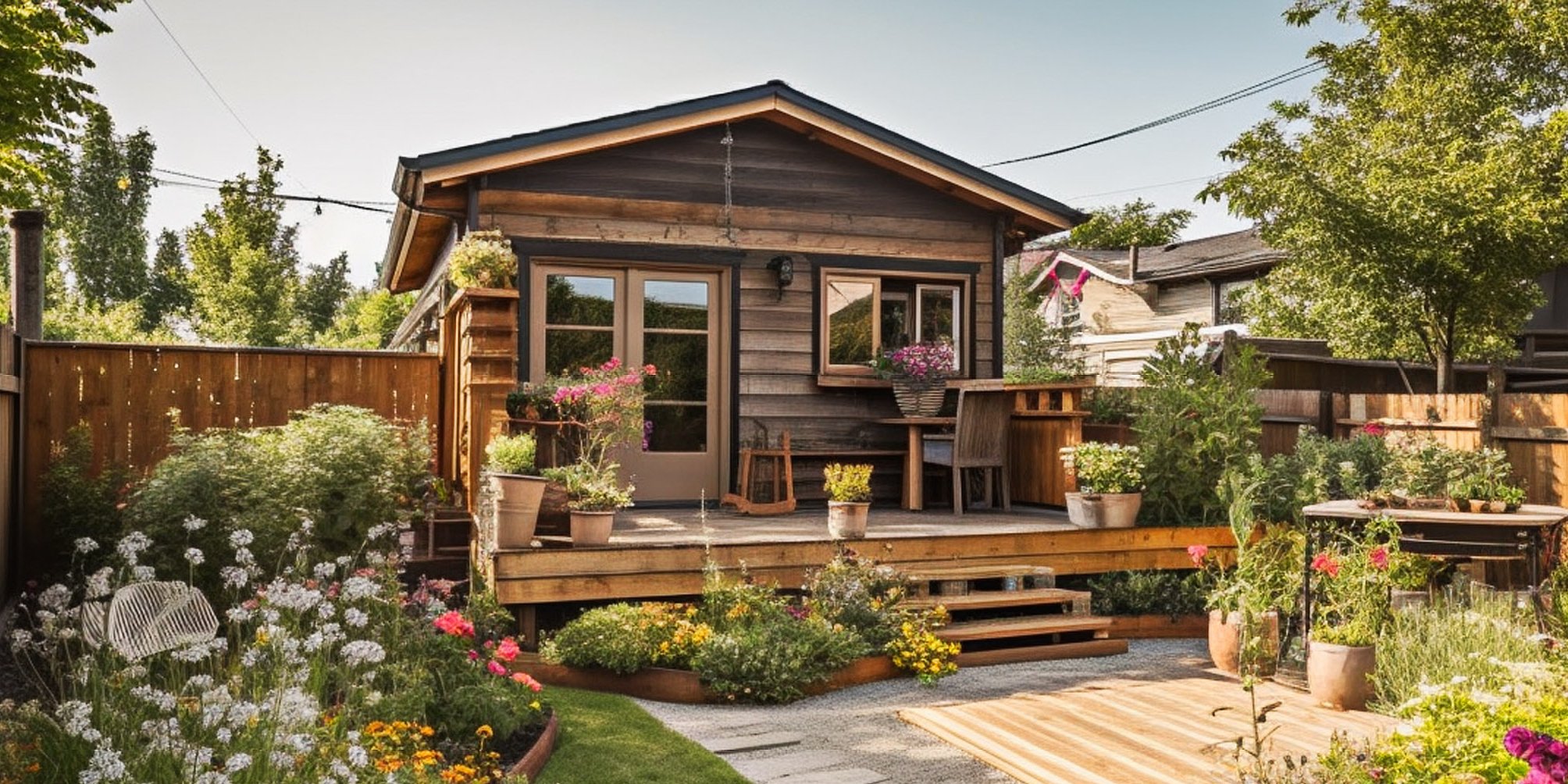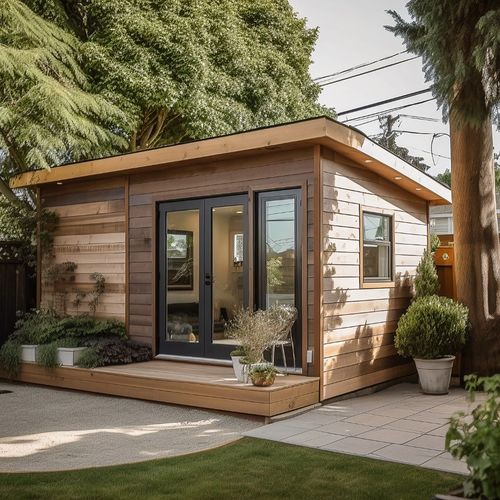Understanding ADU Construction in Santa Clara County
Building an Accessory Dwelling Unit (ADU) in Santa Clara County can be a rewarding venture, both personally and financially. However, the process can be complex and daunting, especially for beginners. This comprehensive guide is intended to provide the necessary information to navigate through the ADU construction process in Santa Clara County.
What is an ADU? An Accessory Dwelling Unit (ADU), also known as a granny unit, in-law unit, or backyard home, is a secondary living unit that can be attached to, or detached from, the primary residential unit. ADUs offer additional living space for family members or can be used as a rental unit to generate income.
The Growing Popularity of ADUs in Santa Clara County
In recent years, ADUs have gained significant popularity in Santa Clara County and California as a whole. According to a report from Housable, the number of permits for ADUs has increased more than tenfold from 1,269 in 2016 to 14,702 in 2019. This surge in popularity is attributed to several significant pieces of legislation passed in California, removing regulatory barriers that created obstacles to building ADUs.
Why Build an ADU in Santa Clara County?
There are numerous advantages to building an ADU in Santa Clara County, some of which include:
- Extra Living Space: An ADU provides additional living space that can be used as guest accommodations, a home office, or even for storage.
- Increase Property Value: Building an ADU can significantly increase the value of your property. ADU-equipped residences are in high demand, with a shortage of them available for purchase.
- Housing for Family Members: An ADU can serve as a home for elderly parents or adult children who still desire their independence but need to be close by.
- Rental Income: Renting out an ADU can provide a consistent source of income, making it an excellent investment.
The ADU Construction Process in Santa Clara County
The process of building an ADU in Santa Clara County involves several steps, as outlined in the Acton ADU guide:
- Initial Assessment: Determine if your property is suitable for an ADU by assessing the size of your lot, the layout, and local zoning regulations.
- Designing the ADU: Once you have determined that your property is suitable for an ADU, the next step is to design the unit. This involves deciding whether the ADU will be attached or detached, the number of bedrooms and bathrooms, and the overall layout.
- Securing Financing: Determine how you will finance the construction of the ADU. This could be through savings, obtaining a loan, or using a Home Equity Line of Credit.
- Obtaining Permits: Before construction can begin, you will need to obtain the necessary permits from the local government. This involves submitting your design plans and paying the required fees.
- Construction: Once you have obtained the necessary permits, the construction of the ADU can begin. This involves site preparation, foundation laying, framing, and installing utilities.
- Inspection and Final Approval: After the construction is complete, the ADU will need to be inspected by the local government to ensure it meets all building codes and regulations. Once it passes inspection, you will receive final approval to use the ADU.
Understanding ADU Construction Guidelines in Santa Clara County
Building an ADU in Santa Clara County involves adhering to specific guidelines and regulations. These include:
- Zoning: ADUs are allowed in any residential or mixed-use zone.
- Number of ADUs: Each single-family home is allowed one ADU per property. Additionally, if the property is owner-occupied, the property may also be allowed a Junior ADU.
- ADU Types: ADUs may be established on single-family properties through the conversion of existing spaces such as garages or through new construction that is attached to or detached from the primary home.
- Unit Size: The maximum allowable floor area for an ADU on a single-family property is 800 square feet, and the minimum allowable floor area of an ADU is 150 square feet.
- Parking: Required parking for the ADU may not exceed one space per bedroom. The ADU shall be exempt from parking requirements if located within 1/2 mile walking distance of a public transit station.
- Setbacks: The minimum required setback for a new construction ADU on a single-family property is 4 feet from the rear and interior side property lines.
- Fire Safety: The installation of fire sprinklers shall not be required in an ADU if sprinklers are not required for the primary residence.
Securing Financing for Your ADU Project
Financing the construction of an ADU is a significant consideration for many homeowners. While some homeowners have the cash available to cover the costs, others may need to secure financing. The most common approach to secure funding is to take a Home Equity Line of Credit that leverages the equity in the primary residence. Speak with a financial advisor or lender to determine the best financing option for you.
Selecting a Construction Company for Your ADU Project
Choosing a construction company that specializes in ADU construction is highly recommended. Traditional “stick-built” and “modular prefab” panel construction are the two most popular construction styles. Companies like Acton ADU specialize in ADU construction and have extensive experience navigating the local regulations and building codes.
Building an ADU: Real-Life Experiences
Building an ADU is a unique experience for every homeowner. Here are two real-life experiences shared by homeowners in Santa Clara County:
- Juanita’s Story: Juanita, a homeowner in Gilroy, decided to build an ADU on her property to create a residence for her sister. She set aside a budget of $255,000, funded from her savings and retirement fund, and found a builder to handle all the details from start to finish. The project took six months to complete, with the biggest challenge being a requirement for the ADU to have solar panels. Unfortunately, during the construction period, Juanita’s sister fell ill and passed away. However, Juanita still completed the ADU and was able to rent it out to a nurse who works nearby.
- Gary’s Story: Gary, a homeowner in Morgan Hill, initially planned to build a two-story ADU. However, due to financial constraints, he decided to start over and build a single-story ADU instead. Gary contacted three different builders that specialize in ADUs and received bids ranging from $400,000 to $600,000. The new design was a 990-square-foot, single-story home that blended into the existing property better than the original two-story design. Gary hopes the two-bedroom ADU will provide a rental income of $2,500 per month to meet his objectives.
Conclusion
Building an ADU in Santa Clara County is a complex process that requires careful planning and consideration. However, with the right information and resources, it can be a rewarding venture. Whether you’re looking to create extra living space for your family, increase your property value, or generate rental income, an ADU can be a valuable addition to your property.
Disclaimer: This article is intended to provide a general understanding of ADU construction in Santa Clara County. It should not be used as a substitute for legal advice from a licensed professional. Always consult with a qualified professional for any legal or construction-related questions.





